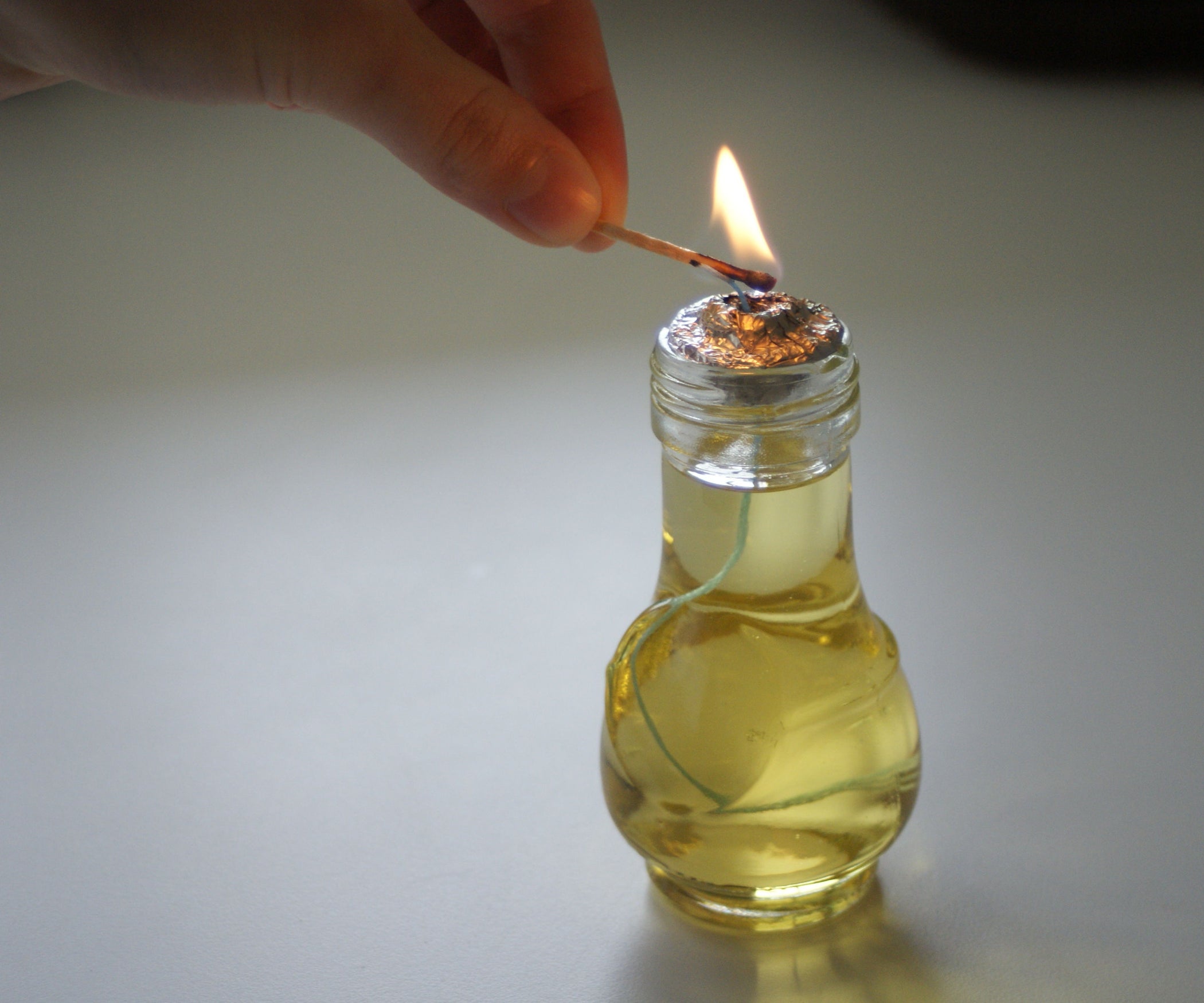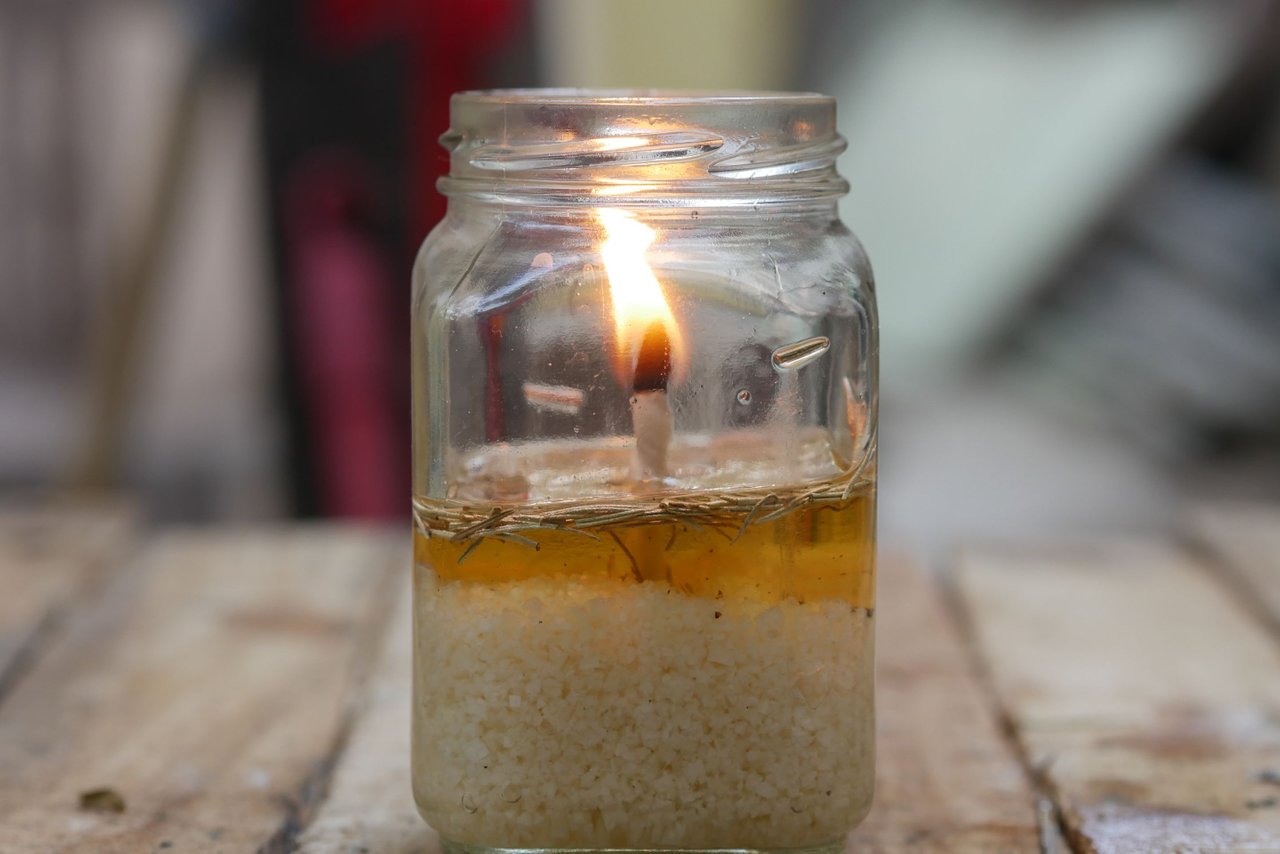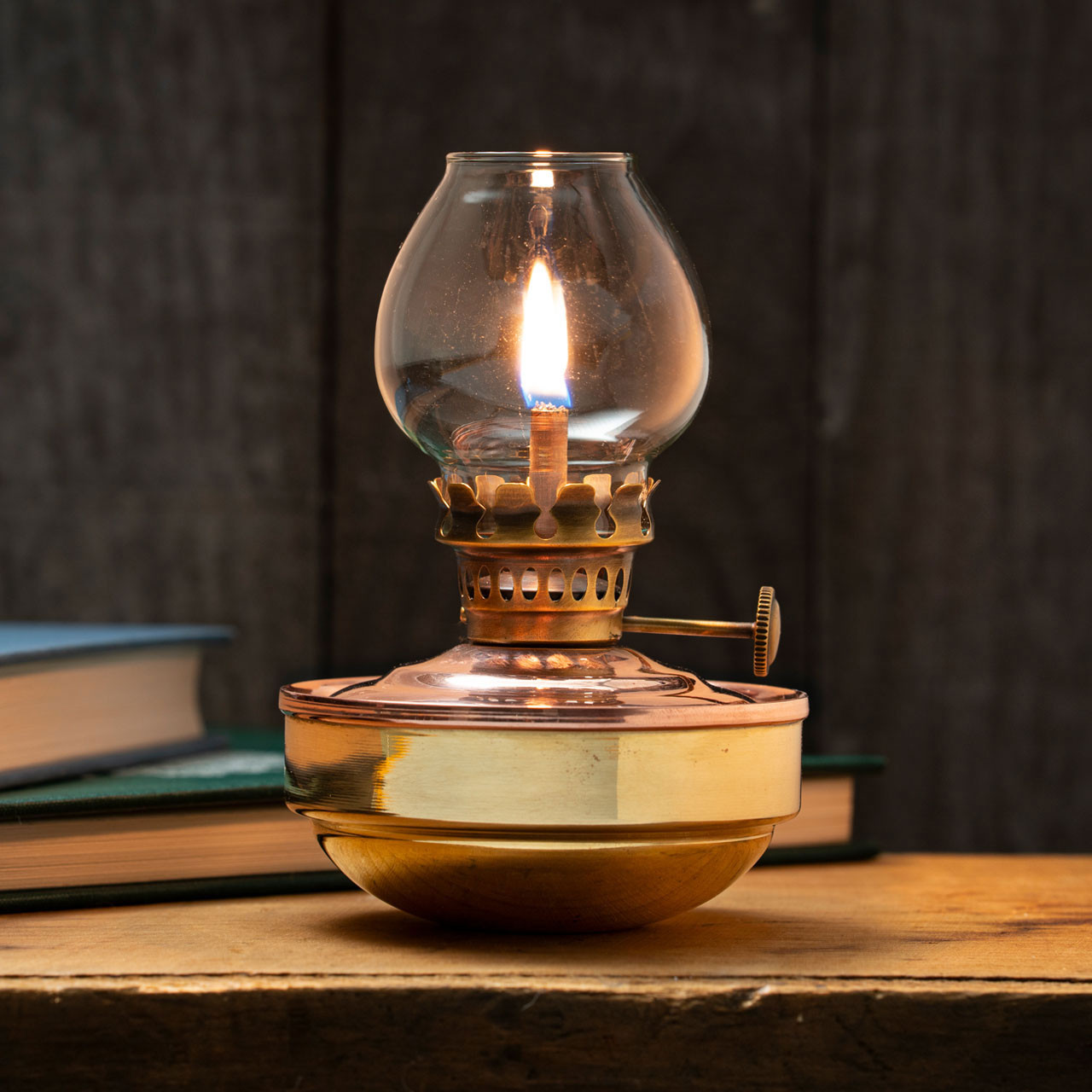

Furniture
What Kind Of Oil Does An Oil Lamp Use
Modified: February 25, 2024
Discover the perfect oil for your oil lamp in our comprehensive guide. From traditional options to eco-friendly alternatives, we've got your furniture covered.
(Many of the links in this article redirect to a specific reviewed product. Your purchase of these products through affiliate links helps to generate commission for Storables.com, at no extra cost. Learn more)
Introduction
Welcome to the fascinating world of oil lamps! These beautiful and timeless pieces of decor have been used for centuries to provide warm and ambient lighting in homes and outdoor settings. However, many people often wonder what kind of oil is suitable for use in an oil lamp. In this article, we will explore the different types of oil that can be used, from traditional options to modern alternatives. Whether you are a collector of antique oil lamps or a fan of their nostalgic charm, understanding the right type of oil to use is essential for both functionality and safety.
Oil lamps have a rich history, dating back thousands of years. They were used in ancient times to light up homes, streets, and even religious ceremonies. Today, they continue to adorn homes with a touch of old-world elegance and serve as a reliable source of lighting during power outages or outdoor events.
As with any type of lighting, the fuel used in oil lamps plays a crucial role in their performance. The right oil will ensure a steady and odor-free flame, while the wrong choice could result in smoke, soot, or even damage to the lamp itself. Let’s dive into the different types of oil commonly used in oil lamps, both traditional and modern alternatives.
Key Takeaways:
- Choose the right oil for your oil lamp based on factors like compatibility, clean-burning performance, safety, availability, cost, and environmental impact to enhance your lighting experience.
- Whether you prefer traditional oils or modern alternatives, prioritize safety and functionality when selecting the perfect oil for your oil lamp. Enjoy the warm and inviting ambience they provide.
Read more: What Kind Of Oil Does A Rain Lamp Use
Understanding Oil Lamps
Before we delve into the types of oil used in oil lamps, it’s important to have a basic understanding of how these lamps work. Oil lamps feature a reservoir that holds the fuel and a wick that draws the oil upward. When the wick is lit, the oil-soaked fibers burn, producing a steady flame.
Oil lamps are designed to burn with minimal smoke and odor. They are usually made of materials such as glass, ceramic, or metal, and their design is centered around safety and efficiency. The flame produced by an oil lamp emits a warm and inviting glow, creating a cozy atmosphere in any room or outdoor space.
Although different styles of oil lamps exist, they all share the same basic mechanism. The type of oil used in an oil lamp greatly affects its performance and the quality of light it produces. Let’s explore the various options available.
Types of Oil Used in Oil Lamps
When it comes to selecting the right oil for your oil lamp, you have several options to choose from. The type of oil you use will depend on various factors, including personal preference, availability, and the type of lamp you have. Here are some of the most commonly used oils:
1. Lamp Oil
Lamp oil, also known as liquid paraffin or kerosene, is the most popular and widely available fuel for oil lamps. It is a relatively clean-burning fuel that produces a steady flame with minimal smoke or odor. Lamp oil is highly refined and has a long shelf life, making it an excellent choice for both indoor and outdoor use.
2. Vegetable Oil
If you prefer a more natural and eco-friendly option, vegetable oil can be used as an alternative to lamp oil. Common vegetable oils like olive oil, canola oil, or soybean oil can be used in oil lamps. Keep in mind that vegetable oils may produce more smoke and odor compared to lamp oil. It is best to use them in well-ventilated areas.
Read more: How To Use An Oil Lamp
3. Citronella Oil
If you plan to use your oil lamp outdoors, citronella oil can be a great choice. Citronella oil is derived from the citronella plant and is known for its mosquito-repellent properties. It not only provides ambient lighting but also helps keep annoying bugs at bay during your outdoor gatherings.
4. Olive Oil
Olive oil is another natural oil that can be used in oil lamps. It is readily available and produces a pleasing, warm glow. However, it may burn faster and require more frequent refilling compared to other oils. Olive oil is commonly used in decorative or small oil lamps where aesthetics are a priority.
These are just a few examples of the oils that can be used in oil lamps. It’s important to note that some oils may require special wicks or adjustments to ensure proper burning. Be sure to read the manufacturer’s instructions or consult an expert if you are unsure about which oil to use for your specific lamp.
Now that we’ve explored the different types of oil commonly used in oil lamps, let’s take a look at the traditional oils that have been used throughout history.
Traditional Oils for Oil Lamps
Throughout history, various types of oils have been used in oil lamps, depending on the availability of resources and cultural preferences. These traditional oils have left a significant mark on the legacy of oil lamps. Here are some of the notable traditional oils used:
1. Animal Fat
In ancient times, animal fat was widely used as a fuel source for oil lamps. People would render fat from animals such as cows, sheep, or pigs and use it to fill their lamps. While animal fat provided a reliable source of fuel, it produced a considerable amount of smoke and odor, making it less desirable compared to other options.
Read more: What Can I Use As A Wick For An Oil Lamp
2. Whale Oil
Whale oil, derived from the blubber of whales, was a popular choice for oil lamps during the 18th and 19th centuries. It burned with a bright and clean flame, making it highly valued. However, the hunting and extraction of whale oil led to severe environmental damage and the decline of whale populations. As a result, the use of whale oil has been largely discontinued due to conservation efforts.
3. Beeswax
Beeswax, produced by bees, has been used for centuries as both a fuel and a material for candle making. It burns cleanly, with a sweet and honey-like scent. Beeswax candles were often used in high-status households and religious ceremonies. It can also be used in oil lamps by melting the wax and soaking a wick in it. However, beeswax can be more expensive and harder to source compared to other oils.
4. Olive Oil
Olive oil, though mentioned earlier as a modern alternative, has also been used traditionally. In regions where olive trees grow abundantly, such as the Mediterranean, olive oil was a common choice for lighting. The availability and ease of extraction made it a practical and accessible fuel source for oil lamps.
These traditional oils played an important role in the development of oil lamps and the history of lighting. While some of these options may not be as commonly used today, their influence and significance are undeniable.
Now that we’ve explored traditional oils, let’s move on to the modern alternatives that have gained popularity in recent years.
Modern Alternatives for Oil Lamps
In recent years, there has been a rise in the popularity of modern alternatives for oil lamps. These alternatives offer convenience, eco-friendliness, and unique features that cater to different preferences. Here are some of the modern alternatives for oil lamps:
Read more: How To Use An Oil Diffuser Lamp
1. LED Flameless Candles
LED flameless candles have become a popular choice for those seeking a safer and hassle-free alternative to traditional oil lamps. These candles provide a realistic flickering flame effect without the need for fuel or a wick. LED candles are battery-operated and can be set on timers or remote-controlled, making them convenient and versatile for use in various settings.
2. Solar-Powered Lanterns
Solar-powered lanterns harness the sun’s energy to generate light. They are equipped with solar panels that charge during the day and automatically turn on at night. Solar lanterns are a sustainable and energy-efficient alternative to oil lamps, perfect for outdoor use or areas with limited access to electricity.
3. Natural Gas or Propane Lamps
Natural gas or propane lamps provide strong and steady illumination without the need for liquid fuel. These lamps are connected to a gas supply, usually through a pipeline or a propane tank, and can be ignited with a switch or a match. Natural gas or propane lamps offer the convenience of a consistent fuel source without the need for refilling or changing wicks.
4. Battery-Operated Oil Lamps
Battery-operated oil lamps combine the vintage charm of traditional oil lamps with modern technology. These lamps are powered by batteries and feature LED bulbs that simulate the glow of a real flame. They often include a refillable reservoir for a small amount of oil, providing the ambiance of an oil lamp without the maintenance and potential risks associated with using liquid fuel.
These modern alternatives for oil lamps offer convenience, safety, and versatility. They provide an array of options for those who appreciate the ambiance of traditional oil lamps but prefer a more modern approach.
Now that we’ve explored the traditional oils and modern alternatives, let’s discuss some important factors to consider when choosing oil for your oil lamp.
Read more: How Does An Oil Lamp Work
Factors to Consider When Choosing Oil for an Oil Lamp
When selecting the oil for your oil lamp, there are several factors to consider to ensure optimal performance and safety. Here are some important factors to keep in mind:
1. Compatibility with the Lamp
Not all oils are suitable for every type of oil lamp. Some lamps are specifically designed to work with certain types of oil, and using the wrong fuel may result in inefficient burning or damage to the lamp. Be sure to check the manufacturer’s recommendations or consult an expert to determine the compatibility of the oil with your specific lamp.
2. Clean-Burning Performance
Choose an oil that burns cleanly, producing minimal smoke and soot. Lamp oils, such as liquid paraffin or kerosene, are known for their clean-burning properties. This ensures that your oil lamp emits a steady, bright, and odorless flame, creating a pleasant lighting experience.
3. Safety Considerations
Safety should be a top priority when selecting oil for your oil lamp. Avoid highly flammable oils or fuels that may pose a risk of combustion or accidents. Always follow the manufacturer’s instructions regarding fuel usage and storage, and take necessary precautions to prevent spills or leaks.
Read more: What Kind Of Oil Can You Use On Hand Tools
4. Availability and Cost
Consider the availability and cost of the oil you choose. Lamp oils like liquid paraffin or kerosene are widely available and relatively inexpensive. On the other hand, specialty oils or natural options like beeswax may be harder to find and cost more. Assess your budget and the accessibility of the oil to ensure an economical and convenient choice.
5. Environmental Impact
If you’re conscious of your environmental footprint, consider eco-friendly alternatives such as vegetable oils or LED flameless candles. These options reduce the consumption of fossil fuel-based oils and have a lower impact on the environment. However, it’s important to consider factors such as smoke emissions or packaging waste when evaluating the environmental impact of your choice.
By considering these factors, you can make an informed decision when selecting the oil for your oil lamp. Remember to prioritize safety, performance, and your personal preferences to enhance your lighting experience.
Now that we’ve discussed the key factors to consider, let’s wrap up our exploration of oils for oil lamps.
Conclusion
Choosing the right oil for your oil lamp is essential for both functionality and aesthetic appeal. Whether you prefer the traditional charm of antique oil lamps or the convenience of modern alternatives, understanding the types of oil available and their respective benefits is crucial.
In this article, we explored various oils commonly used in oil lamps. Lamp oil, vegetable oil, citronella oil, and olive oil are just a few examples of the options available. Each oil has its own characteristics, including burn efficiency, smoke production, fragrance, and environmental impact.
It’s important to consider factors such as the compatibility of the oil with your lamp, clean-burning performance, safety considerations, availability, cost, and the environmental impact when making your selection. By taking these factors into account, you can ensure that your oil lamp functions optimally and provides the desired lighting experience.
Remember, safety should always be a top priority when using an oil lamp. Follow the manufacturer’s instructions, handle the oil with care, and keep the lamp away from flammable materials.
Whether you enjoy the mesmerizing glow of a traditional oil lamp or the convenience of a modern alternative, the right choice of oil will enhance your lighting experience. Take the time to explore the various options, experiment with different oils, and find the perfect match for your oil lamp and personal preferences.
So, go ahead and fill your oil lamp with the appropriate oil, and enjoy the warm and inviting ambience that only an oil lamp can provide. Let the timeless beauty and allure of oil lamps illuminate your space, creating a cozy and enchanting atmosphere.
Now, it’s time to embrace the charm of oil lamps and bask in their gentle glow.
Frequently Asked Questions about What Kind Of Oil Does An Oil Lamp Use
Was this page helpful?
At Storables.com, we guarantee accurate and reliable information. Our content, validated by Expert Board Contributors, is crafted following stringent Editorial Policies. We're committed to providing you with well-researched, expert-backed insights for all your informational needs.











0 thoughts on “What Kind Of Oil Does An Oil Lamp Use”